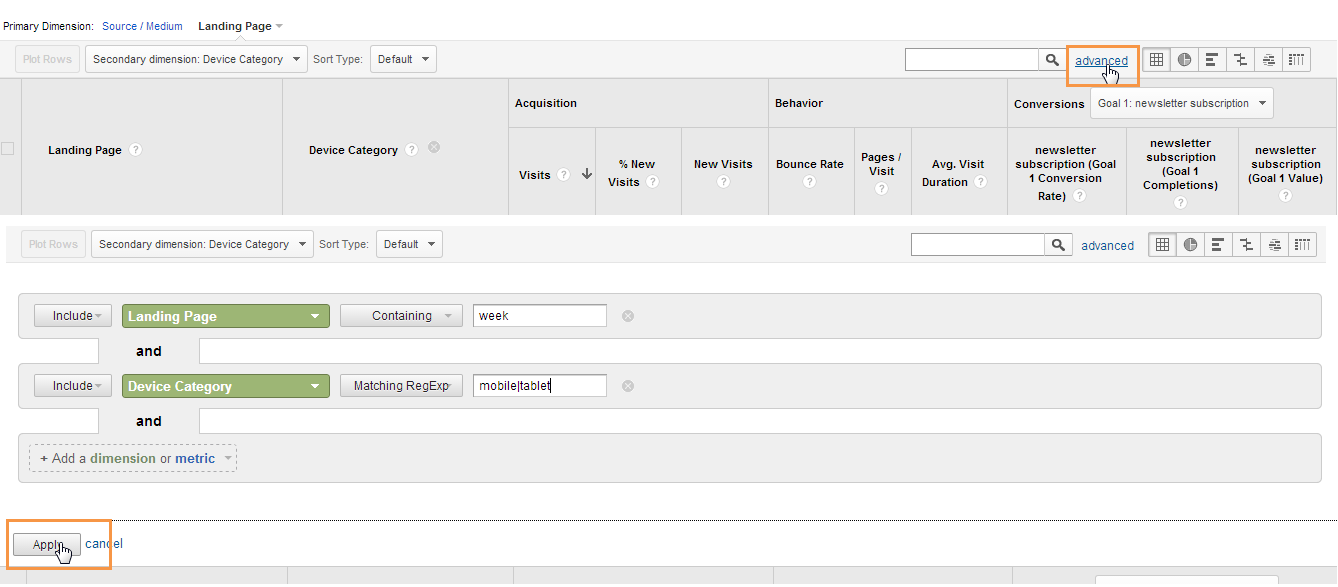Improve Your Metrics: Understanding Google Analytics Secondary Dimension
Improve Your Metrics: Understanding Google Analytics Secondary Dimension
Blog Article
Opening the Power of Second Dimension Analytics for Improved Information Insights and Decision-Making
In the realm of data analytics, key measurements commonly take the limelight, however the true deepness of understandings exists within the realm of secondary dimensions. By utilizing the power of second dimension analytics, companies can unveil covert trends, uncover relationships, and remove a lot more meaningful conclusions from their information.
Value of Secondary Measurements
Discovering the importance of secondary measurements in analytics reveals the covert layers of information insights crucial for educated decision-making in different domains. Second dimensions give a deeper understanding of primary information by providing added context and point of views. By incorporating additional dimensions right into analytics, organizations can draw out more detailed and nuanced insights from their datasets.
One secret importance of additional dimensions is their capability to sector and categorize main information, enabling an extra comprehensive evaluation of specific parts within a dataset. When looking at the data as a whole, this division makes it possible for companies to determine patterns, fads, and outliers that might not be evident. Secondary dimensions assist in revealing relationships and dependencies between different variables, leading to more precise projecting and anticipating modeling - secondary dimension.
In addition, secondary dimensions play an important duty in boosting information visualization and coverage. By including second measurements to visualizations, such as graphs or charts, analysts can create more insightful and helpful representations of data, assisting in much better communication of findings to stakeholders. In general, the combination of additional dimensions in analytics contributes in unlocking the full potential of information and driving evidence-based decision-making.
Trick Advantages of Using Additional Dimensions
Making use of secondary measurements in analytics provides companies a critical advantage by augmenting the deepness and granularity of data understandings. By dissecting information using additional dimensions such as time, place, device kind, or user demographics, organizations can reveal patterns, patterns, and relationships that may or else remain surprise.
In addition, the utilization of secondary dimensions improves the context in which main information is translated. By leveraging second measurements in analytics, companies can harness the complete possibility of their information to drive far better decision-making and attain their business objectives.
Advanced Data Analysis Techniques
A deep study advanced data analysis techniques reveals sophisticated methods for removing beneficial understandings from intricate datasets. One such strategy is equipment understanding, where formulas are used to determine patterns within data, predict outcomes, and make data-driven decisions. This approach permits the automation of logical design building, enabling the handling of huge quantities of data at a faster rate than typical techniques.
One more advanced strategy is anticipating analytics, which uses statistical formulas and maker knowing techniques to anticipate future results based on historic information. By this contact form evaluating trends and patterns, companies can anticipate consumer habits, market trends, and possible dangers, empowering them to make aggressive decisions.
In addition, message mining and sentiment evaluation are important strategies for drawing out insights from disorganized data resources such as social media remarks, customer testimonials, and survey feedbacks. By examining text data, companies can comprehend consumer point of views, recognize emerging trends, and boost their services or items based upon feedback.
Enhancing Decision-Making Via Secondary Measurements

Enhancing decision-making with additional measurements enables companies to make even more educated and targeted strategic options. As an example, by segmenting consumer information based on secondary dimensions like buying background or involvement degrees, companies can tailor their advertising methods to certain target market sectors, bring about improved conversion rates and customer complete satisfaction. Secondary measurements can aid determine connections and relationships between various variables, allowing official website organizations to make data-driven decisions that drive development and productivity.
Carrying Out Additional Dimension Analytics
When incorporating second dimensions in analytics, companies can unlock deeper understandings that drive calculated decision-making and boost general efficiency. This entails recognizing the particular inquiries the organization seeks to address and the data factors called for to address them.

In addition, companies ought to utilize advanced analytics devices and technologies to enhance the procedure of including second measurements. These devices can automate information handling, analysis, and visualization, allowing companies to concentrate on analyzing understandings as opposed to hands-on data control.
Conclusion
In verdict, second measurement analytics play a critical role in improving data insights and decision-making procedures. By using sophisticated information analysis strategies and carrying out secondary measurements successfully, companies can unlock the power of their information to drive calculated organization choices. The essential benefits of making use of secondary measurements can not be overemphasized, as they give a deeper understanding of data patterns and relationships. It is essential for organizations to utilize secondary dimension analytics to stay competitive in today's data-driven landscape.
In the realm of information analytics, key measurements commonly take the limelight, yet the true depth of understandings lies within the realm of additional measurements.Utilizing secondary measurements in analytics supplies organizations a strategic benefit by enhancing the depth and granularity of information insights. By leveraging additional measurements in analytics, organizations can harness the complete potential of their information to drive better decision-making and achieve their company objectives.
Executing data recognition processes and routine audits can assist maintain data quality and dependability.
By utilizing advanced data evaluation techniques and executing secondary dimensions successfully, companies can unlock the power of their information to drive critical service choices.
Report this page